 Graeme Day talks to CrystEngCommunity about predicting crystal structures and using these calculations to design interesting properties in materials
Graeme Day talks to CrystEngCommunity about predicting crystal structures and using these calculations to design interesting properties in materials
03 June 2010
Graeme Day is a Royal Society University Research Fellow at the University of Cambridge, UK and a member of the CrystEngComm advisory board. His research is centred on predicting the structure of molecular crystals, studying lattice dynamics of molecular crystals, crystal property calculations and crystal nucleation and growth.
Why did you become a scientist?
I had a series of very good science teachers in school who got me interested in science early on and I enjoyed the scientific approach to understanding how things work. I also viewed my older brother as a role model when growing up and followed a lot of what he did. He was studying chemistry and physics at university when I was in school and I ended up getting a degree in chemistry and maths.
What projects are you working on at the moment?
There are a few things going on in the group at the moment. We are always working on the development of the computational methods that we use for crystal structure prediction, and tackling problems that are involved with looking at more and more difficult systems, such as large flexible molecules, solvates and other types of multicomponent crystals. What is really exciting in the area of crystal structure prediction is that the methods now work quite well for a range of types of molecules, so we have moved on from just developing methods and are also applying the calculations to explain and design interesting properties in materials.
Another aspect of our work is looking at dynamics in molecular crystals and how the dynamics of molecules in a material influence the properties. We are developing computational methods to interpret and analyse optical phonon mode spectra, such as terahertz spectra of materials. The comparison to measured spectra helps validate our models of intermolecular interactions and this feeds information back into the structure and property prediction work.
What do you think will be the next big breakthrough in your field?
It’s hard to predict what the next breakthrough will be, but I could come up with a wishlist of breakthroughs that I would like to see. What we need for the prediction of crystal structures is a breakthrough in how we can model the influence of crystal growth conditions and heterogeneous nucleation on the structure that is formed under particular conditions. At the moment, we predict more crystal structures of a molecule than are ever observed as polymorphs. We need to be able to predict which of these will be the kinetically preferred structures in a certain experimental setup.
How do you think crystal engineering will develop in the next five years?
I have a biased view here, but I see a much greater role for computational chemistry in predicting the structure and also properties of materials. We are at a stage where the methods are mature and the computing resources are available to incorporate prediction calculations into materials design. Over the next five years or so I expect to see predictive calculations become more regularly used in crystal engineering research groups.
What is the most rewarding aspect of your work?
Doing science means collaborating with talented and enthusiastic people, and I really enjoy being able to sit down and brainstorm with other scientists. I also get a lot of satisfaction from turning a hypothesis into a set of calculations or experiments and eventually the final product of getting a study published. The most satisfying projects are the ones where there are plenty of problems that have to be overcome in completing the study. Straightforward studies are less rewarding.
What is the secret to a successful research group?
I’m fairly new to running a research group, so am still trying to discover the secrets to success myself! A group of people who work well together and are willing to spend time helping each other is important. The group works best when everyone knows where their project fits into the big picture and people are exchanging ideas.
What advice would you give to a young scientist?
You need to make people aware of what you are doing, so don’t turn down chances to gives talks and present your research. Also, do lots of reading, of the recent literature and older publications.
What achievement are you most proud of?
I’m proud of having contributed to the rapid progress that has been made in modelling methods for crystal structure prediction over the last 5-10 years. Organising the last couple of blind tests of crystal structure prediction was also a big job and I’m glad to have contributed to those, which bring the entire field together to validate our methods.
What would you do if you weren’t a scientist?
That’s a difficult one. When I was younger, I played football (soccer) to a reasonably high level, but was never close to being good enough to go pro. Similarly, I was a reasonable clarinetist and played in a student orchestra, but did not see that as a career for me. The answer is that I really don’t know! If I weren’t a chemist, I would probably be a mathematician or physicist.
What is your favourite place to be?
I have moved around a lot during my life, so don’t have one favourite place. I like getting back to Nova Scotia, Canada, to spend time by the ocean and to see my family, but am also happy spending a quiet evening at home with my wife.
Related Links
Graeme Day’s homepage at the University of Cambridge, UK
Themed issue on Dynamic behaviour and reactivity in crystalline solids, Issue 13, 2011
Crystal packing predictions of the alpha-amino acids: methods assessment and structural observations
Graeme M. Day and Timothy G. Cooper, CrystEngComm, 2010, 12, 2443
Predicting stoichiometry and structure of solvates
Aurora J. Cruz-Cabeza, Shyam Karki, László Fábián, Tomislav Frii, Graeme M. Day and William Jones, Chem. Commun., 2010, 46, 2224
Comments Off on Interview with Graeme Day
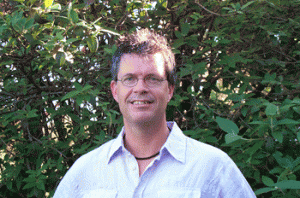 We are delighted to announce that Professor Christer Aakeröy, from Kansas State University, USA, has been appointed as CrystEngComm Associate Editor for the Americas.
We are delighted to announce that Professor Christer Aakeröy, from Kansas State University, USA, has been appointed as CrystEngComm Associate Editor for the Americas.










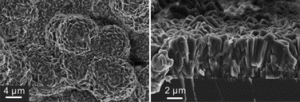
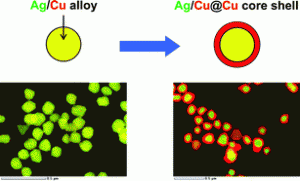 Syntheses of Ag/Cu alloy and Ag/Cu alloy core Cu shell nanoparticles using a polyol method
Syntheses of Ag/Cu alloy and Ag/Cu alloy core Cu shell nanoparticles using a polyol method 

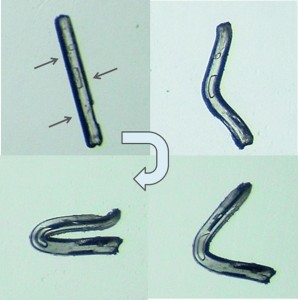
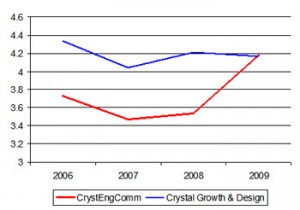
 Graeme Day talks to CrystEngCommunity about predicting crystal structures and using these calculations to design interesting properties in materials
Graeme Day talks to CrystEngCommunity about predicting crystal structures and using these calculations to design interesting properties in materials Len MacGillivray tells CrystEngCommunity about his secret to running a good research group and has some good advice for young scientists
Len MacGillivray tells CrystEngCommunity about his secret to running a good research group and has some good advice for young scientists